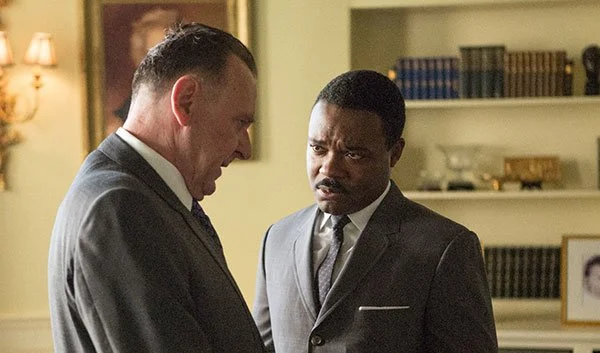Selma–Reflections
06-09-2015
By Prof. Reggie Williams
The movie Selma was released in December of this academic year, drawing many students, faculty and staff from McCormick Theological Seminary to movie theaters. The movie dramatically tells the story of the march from Selma to Montgomery, Alabama, in 1965 that was later nicknamed “Bloody Sunday” because of the overtly vicious and public nature of police brutality against the peaceful marchers. The protests in Alabama coincided with activist’s efforts to register African Americans in Alabama to vote. The bloody Sunday march was in large part motivated by the killing of an unarmed young black man, Jimmie Lee Jackson, by a white police officer. The film depicts Jimmie, his mother and his grandfather demonstrating peacefully against voting restrictions set in place by white supremacy to keep black people from voting, when they are chased, beaten and Jimmie is shot to death. The outcry against Lee’s murder helped to galvanize the African American community in Selma to protest, which led to further victimization by police, and ultimately to a successful march to Montgomery.
Some of the fascinating features of the film are its most subtle messages. President Lyndon B. Johnson was, in reality, the one president in the history of the nation, who has done the most for civil rights. Yet the movie depicts him as oppositional to MLK and the civil right’s movement’s efforts in Alabama. That was a subtle yet intentional mechanism to demonstrate the manner in which systems and structures have historically worked in America to oppose the full inclusion of peoples of color into full American citizenship. In the film, President Johnson is typically shown standing beneath the painting of other presidents while in conversation with others. At one point in the movie, he is seen standing under a painting of President Andrew Jackson, the president responsible for orchestrating the forceful removal of Cherokee Indians from what became Oklahoma, in the infamous trail of tears in 1837. It was said that the Indians refused to assimilate, which was code language for “they should have complied; they should not have resisted. They brought their fate upon themselves.” It was the “blame the victim” routine that is very old in America. In the film, the trail of tears is artistically juxtaposed next to the bloody Sunday march by the film’s masterful cinematography, comparing the plight of two marginalized and outcast groups at the hands of white supremacist government.
In light of Michael Brown in Ferguson, Walter Scott in South Carolina, Tamir Rice in Cleveland Ohio, Freddie Gray in Baltimore, and countless other unarmed blacks killed by the police in America, the Selma march must continue, albeit in different ways. While LBJ is depicted as standing under American leadership, Martin Luther King Jr. is often standing under the cross, demonstrating that the work for justice and against oppression has historical roots within one of America’s Christian traditions that has not been co-opted by systems and structures of oppression and domination. If we are careful to heed the call for justice, perhaps we can also serve God, push back against injustice like the marchers in Selma, and participate in the work that God is doing in Christ, for justice.
Dr. Reggie Williams teaches ethics at McCormick Theological Seminary. His first book, Bonhoeffer’s Black Jesus, was published in the fall of 2014.
Director Ava DuVernay framed Pres. Lyndon Baines Johnson (Tom Wilkinson) in front of a portrait of Andrew Jackson, the president who ordered the violent displacement of the Cherokee known as the Trail of Tears.




